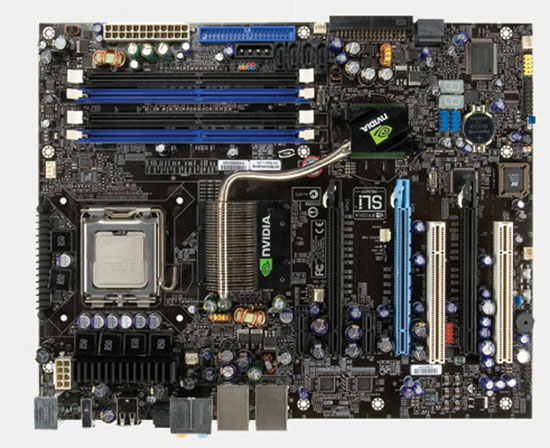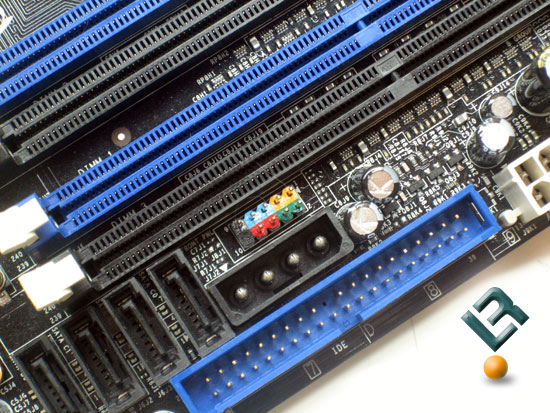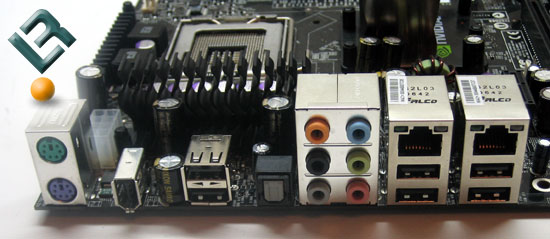EVGA nForce 680i SLI 775 A1 Motherboard Review
Board Layout

As you can see, this EVGA board is that standard Nvidia reference design, so there really were no surprises for us as far as layout is concerned. The same concerns that we had with the ECS board is what we see here, which we will highlight as we go.

The top right of the board is where we find our Dimm slots. This board supports DDR2 memory architecture up to 8 GB, in Dual-channel configuration, at speeds of DDR2 800/667/533/400. To the right of the dimm slots, we actually see quite a bit crammed in. You have your 24-pin power connector towards the top. An IDE connector is located just under that. To the left of the IDE connector is a 4-pin molex power connector, which adds stability to the board when running in an SLi configuration. Just under the 4-pin molex connector we find our four SATA connectors. These connectors are powered by the Nvidia chipset, and are SATAII compliant. They also support running RAID in 0, 1, 0+1, 5 and JBOD.

Just to point it out, as we mentioned in our last 680i review, this area is just crammed! I know you have to put things somewhere, but this is tight!

The bottom right of the board shows us the cooling for the north and south bridges. Once again, this is a reference design, so we have a passive cooling setup for the southbridge, which seems just fine as it did not even get hot during our testing. The battery and bios are on this part of the board, as well as an assortment of IEEE1394 and USB headers. Also on this part of the board is an LED readout for troubleshooting problems that may arise. We also have onboard power and reset buttons, which I absolutely love when working on a board on the test bench! Here is a closer look at the LEDs.


The bottom left of the board is where we will find our add-in card slots. The board has a total of 7 expansion card slots for use. It includes two legacy pci slots, 2 x1 pci-e slots, and 3 x16 pci-e slots. The two black pci-e x16 slots are fully 16x speed slots. These two slots are also the ones to use for running SLi. The third (blue) x16 pci-e slot will run only at 8x speeds, and will allow for future add-on for your rig (like Physics cards).
We also have our lan chips here. The dual lan is powered by two Marvell 88E1116 Gigabit Fast Ethernet chips.

Sound on the EVGA 680i SLi 775 A1 board powered by the Realtek ALC885, and supports Intel 8-channel HD Audio. This sound solution should be fine for all but the most critical audiophile.

The top right of the board houses our CPU socket, which is nice and clear of any obstructions, or anything that would even come close to hindering the installation of a HSF or any other means of cooling. You can also see the 8-pin power connector tucked in right behind the I/O ports, just above the heatsink.

The back I/O port has our ps2 mouse and keyboard connectors, your firewire and six USB ports and your audio jacks. We also have our dual gig-lan and SPDIF out for our audio.

Comments are closed.